
Roots
Consider for a moment the very origins of our being, rooted deeply in sun-kissed lands where the rhythm of life beat in tandem with the celestial sphere. For those whose ancestry traces through the expansive, vibrant lineage of textured hair, there exists an innate connection to the earth’s cycles, to the elements that shaped existence. The sun, a source of life-giving warmth, also presented its challenges.
Yet, our forebears, with profound wisdom woven into their daily lives, developed ingenious ways to coexist, protecting their coils and crowns from its intense embrace. This inquiry into ancestral methods for textured hair resilience against solar influence begins not with scientific jargon, but with a respectful acknowledgment of the inherent intelligence residing in centuries of lived experience, a deep heritage that speaks through every strand.
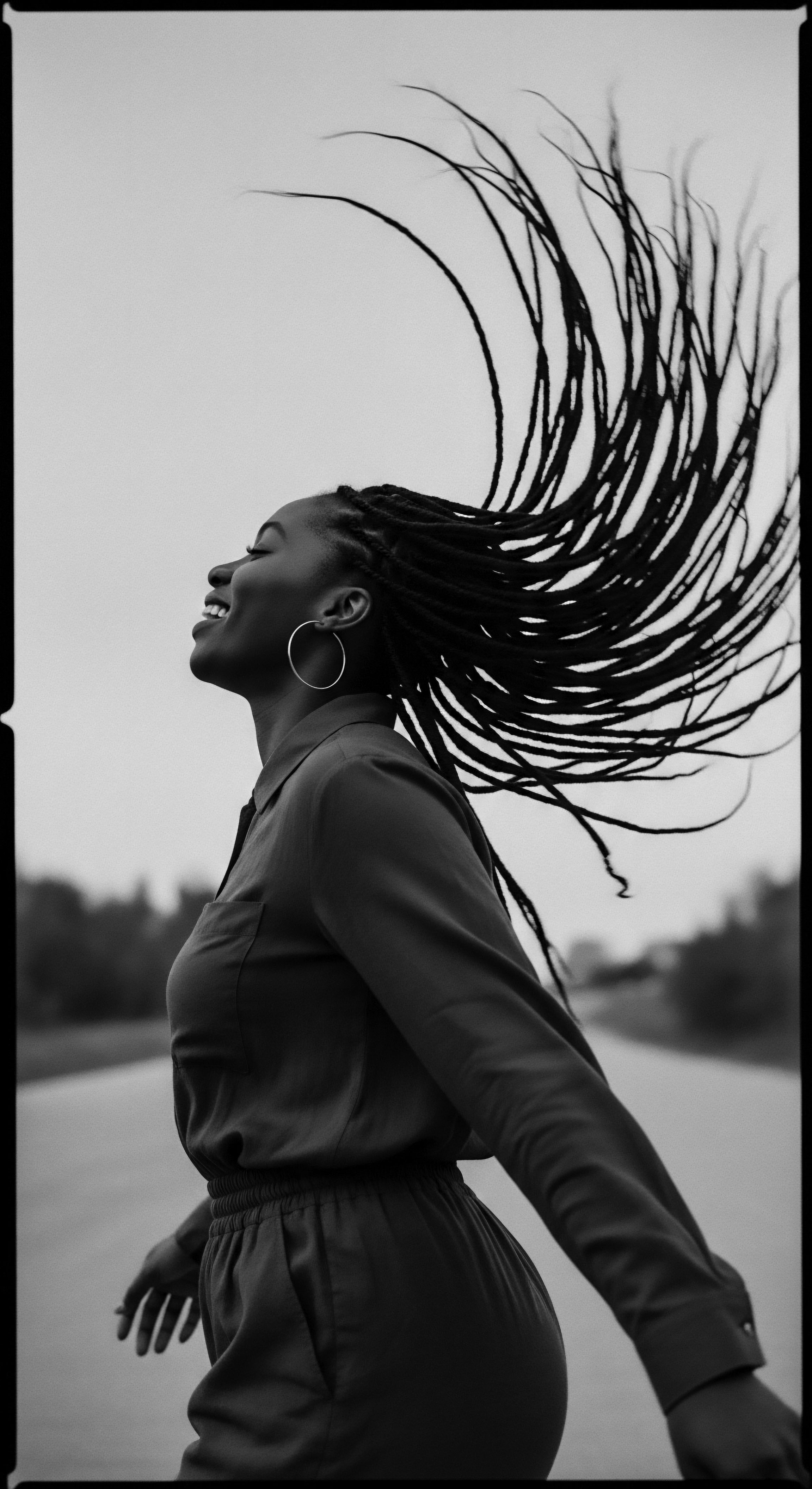
Anatomical Wisdom of Textured Hair
Textured hair, with its remarkable variations—from broad waves to tightly wound coils—possesses a distinct anatomy. Its helical or elliptical follicular shape causes the hair shaft to grow with twists and turns. This unique architecture provides natural benefits, including a denser appearance when compared to other hair types. Evolutionary experts suggest that afro-textured hair was the first hair texture of modern humans, an adaptation to shield the head from intense ultraviolet radiation.
(Caffrey, 2023). This very structure, allowing for air to pass through its spiraled formation, also served to cool the scalp in hot climates. (Caffrey, 2023).
Understanding the fundamental makeup of the hair shaft is central to appreciating how ancestral wisdom aligned with its needs. The outermost layer, the Cuticle, composed of overlapping keratinized scales, serves as a primary protective barrier. When exposed to external factors like UV light, this cuticle can become raised and porous, exposing the inner Cortex to damage.
(Cosmet Dermatol, 2011). The cortex, which comprises the bulk of the hair, contains protein fibers and pigments, primarily melanin.
The intrinsic structure of textured hair speaks to an ancient design, a testament to its evolutionary purpose in sun-drenched environments.
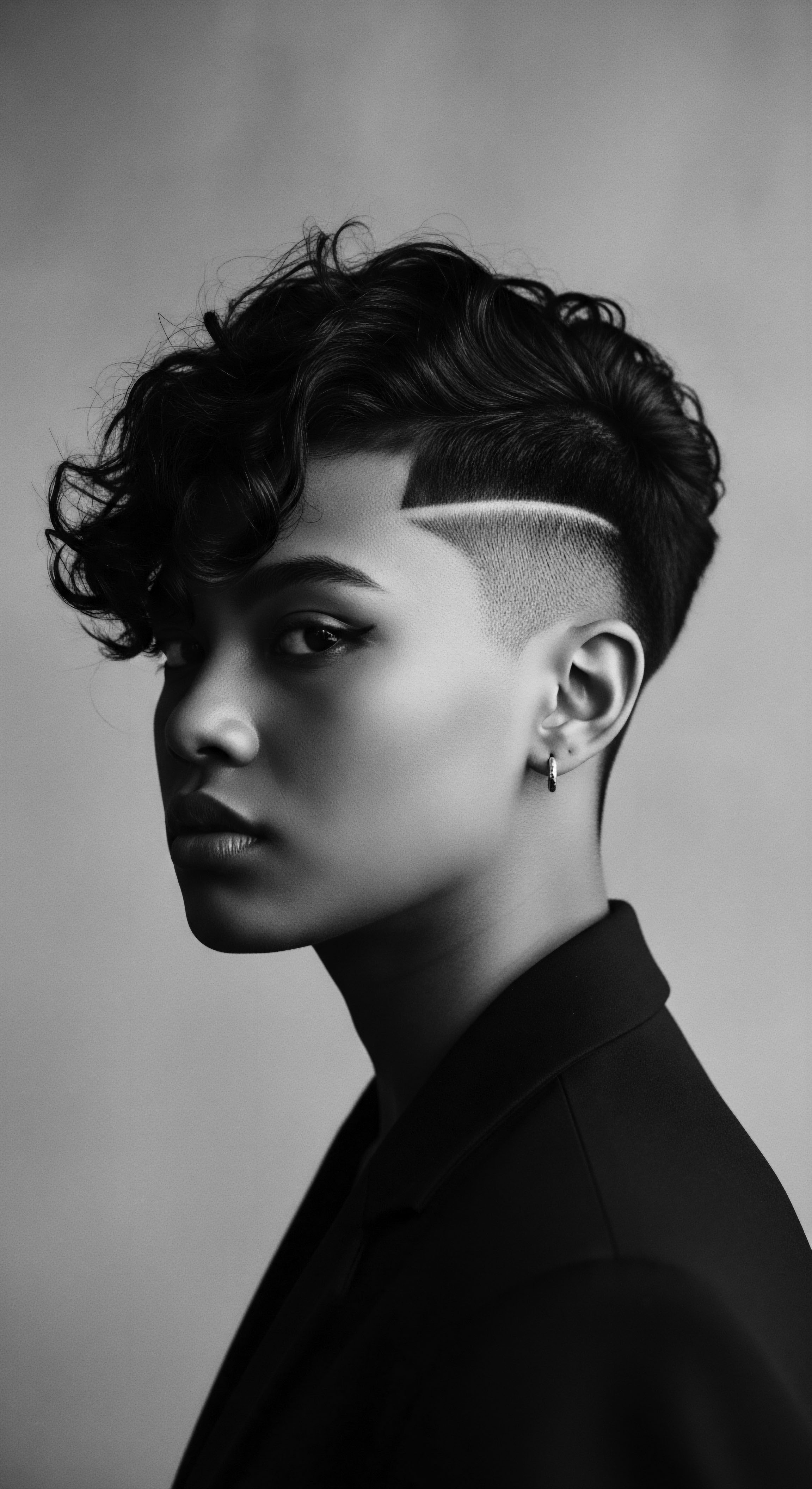
The Melanin Shield
Within the cortex, melanin plays a pivotal role in photoprotection. Dark and black hair, rich in eumelanin, contains more photosensitive amino acids than lighter hair. Yet, the higher concentration of melanin in these hair types provides a more robust defense against UV radiation, helping to absorb and filter adverse UV rays and immobilize free radicals, which would otherwise degrade hair proteins like keratin. (Cosmet Dermatol, 2011).
This inherent melanin content provided a foundational, biological shield for ancestral communities. The resilience of these strands, under relentless sun, was in part a gift of nature’s own intricate design, a deeply rooted aspect of textured hair heritage.

Early Lexicon of Hair Identity
The language used to speak of textured hair in ancestral communities was rarely just descriptive; it was often imbued with social, spiritual, and cultural meaning. In pre-colonial African societies, hair communicated identity, status, and even spiritual connection. (Afriklens, 2024). Hairstyles denoted tribal affiliation, marital status, age, and social rank.
(Africa Facts Corner, 2024). This rich tapestry of meaning extended to the methods of care, where each practice was a dialogue with heritage, a continuation of ancestral wisdom. The very act of grooming was a communal activity, strengthening bonds while preserving cultural identity. (Hair Care Practices from the Diaspora, 2025).
The specific terms used in these traditions for oils, coverings, or styling techniques were not merely functional labels. They were expressions of a sophisticated understanding of hair’s needs, often reflecting the environment and the deep knowledge of local flora and fauna. These terms carry within them generations of observations and a collective reverence for the hair as a sacred part of self.

Ritual
The daily and seasonal rhythms of ancestral life dictated a profound connection to natural resources, particularly when it came to personal care. The sun, while a life-giver, posed a constant challenge to hair health. Ancestral communities, deeply attuned to their surroundings, developed sophisticated routines that served not only to adorn but primarily to protect. These care rituals, passed through generations, stand as pillars of textured hair heritage, offering practical solutions for resilience against solar exposure.

The Practice of Protective Coverings
One of the most straightforward and universally practiced methods was the use of head coverings. Across various African societies, Headwraps were not merely aesthetic additions; they served as practical garments to shield hair from harsh conditions, including direct sun exposure. (Afriklens, 2024).
In many cultures, these coverings reflected wealth, ethnicity, marital status, and even emotional states. (Helix Hair Labs, 2023).
- Dukus and Doeks ❉ Traditional headwraps in African countries like Ghana and Namibia, worn for centuries, offer physical protection from the sun while also conveying cultural identity. (Byrdie, 2022).
- Tignons ❉ In 18th-century Louisiana, Tignon Laws mandated head coverings for free Black women, intending to diminish their beauty. Yet, these women transformed the regulation into an act of silent defiance, using ornate fabrics and elaborate tying styles, making them statements of cultural pride and resistance. (The Zoe Report, 2024).
- Hats and Scarves ❉ Beyond formal headwraps, simpler coverings like hats and scarves were commonplace, acting as direct shades to prevent sun damage. (GlammedNaturallyOil, 2020).
This tradition of covering hair, often with beautiful and meaningful textiles, represents a powerful heritage of self-preservation and identity, particularly in the face of environmental rigors and, later, oppressive forces. These coverings reduced direct exposure to UV rays, thereby lessening protein degradation and color changes in the hair shaft. (UV Damage of the Hair, 2023).
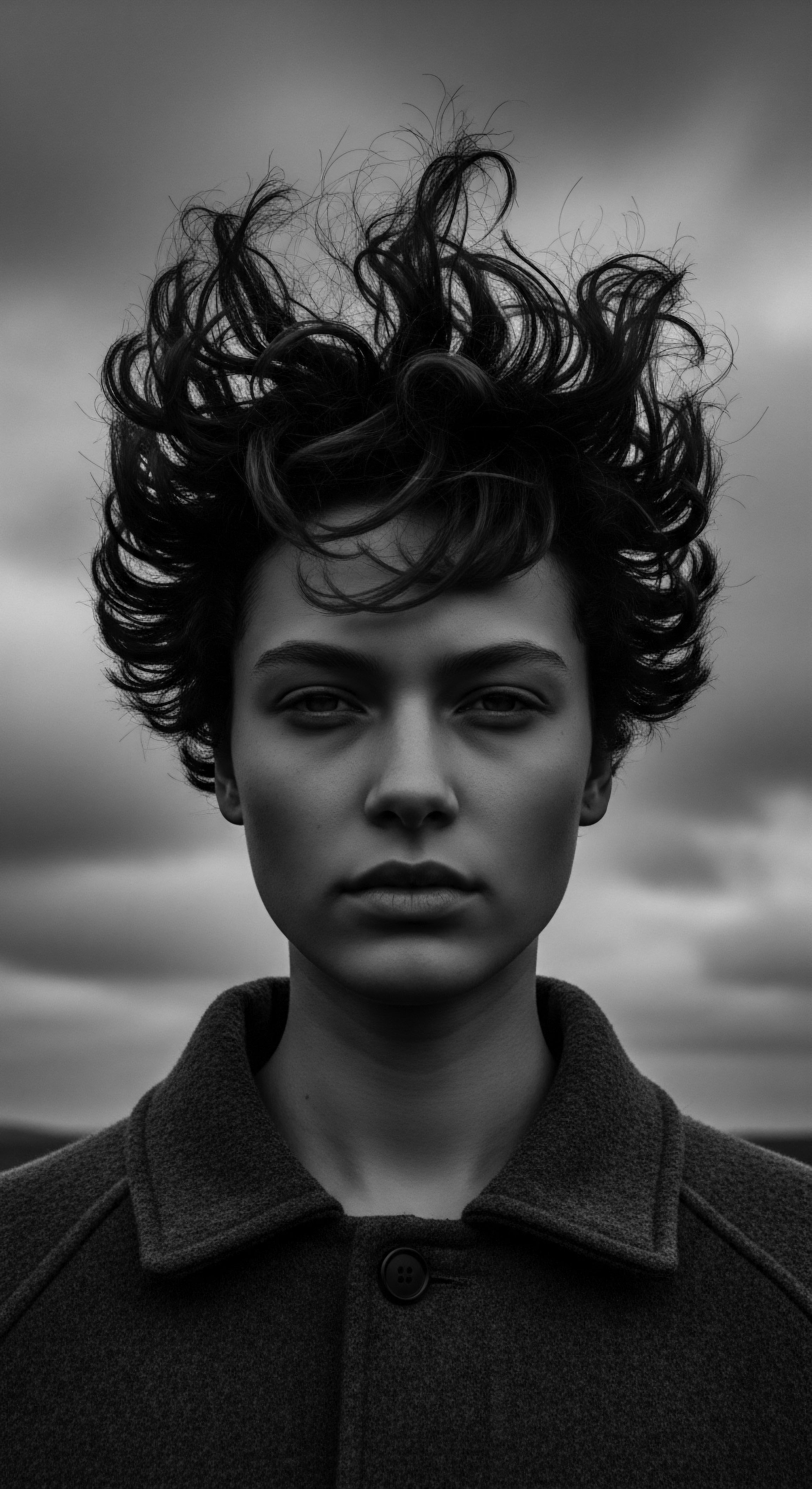
Nature’s Bounty for Hair Resilience
The earth provided a pharmacy of ingredients. Ancestral communities understood the properties of various plant oils, butters, and clays, using them for nourishment and protection. These natural applications provided a physical barrier and infused the hair with moisturizing and antioxidant properties.

Oils and Butters as Sun Guardians
Plant-based oils and butters were central to ancestral hair care routines. These natural emollients offered lubrication, softened the hair, and formed a protective barrier against environmental stressors. (Carrier Oils Benefits and Uses For Natural and Organic Hair Care, 2020).
| Traditional Oil/Butter Shea Butter |
| Ancestral Use for Sun Resilience Used extensively in African communities to moisturize and protect hair from harsh environmental conditions. (22 Ayur, 2023). Its high content of vitamins A and E provides antioxidant properties, which can help neutralize free radicals from UV radiation. (Dr Emmaline Ashley, 2023). |
| Traditional Oil/Butter Coconut Oil |
| Ancestral Use for Sun Resilience A widely used natural protector against the sun, particularly in Southeast Asia and Polynesia. It contains lauric acid and offers a natural SPF, helping to shield hair from sun damage. (Dr Emmaline Ashley, 2023). Some research suggests it offers a natural SPF of around 10. (GlammedNaturallyOil, 2020). |
| Traditional Oil/Butter Olive Oil |
| Ancestral Use for Sun Resilience Valued by ancient Greeks for skin and hair. It possesses some protective properties and can act as a natural sunscreen. (Midwest Bioprocessing Center, 2022). |
| Traditional Oil/Butter Aloe Vera |
| Ancestral Use for Sun Resilience Used by Native American tribes as a moisturizer for hair and body, also providing protection from sun and other harsh weather. (ICT News, 2023). It rehydrates hair and skin after sun exposure. (Grand Textures by Janay, 2024). |
| Traditional Oil/Butter Otjize (Himba Blend) |
| Ancestral Use for Sun Resilience The Himba people of Namibia mix butterfat from cattle with red ochre clay to create a paste applied to skin and hair daily. This mixture provides a physical barrier and some sun protection. (Seriously FAB, 2023), (Grand Textures by Janay, 2024). |
| Traditional Oil/Butter These traditional ingredients underscore a profound ancestral knowledge of botanical properties for maintaining hair health and resilience against solar aggression. |
The application of these substances was not a casual act. It was often part of a deliberate routine to seal in moisture and create a barrier between the environment and the hair strands. The moisture retention provided by oils and butters is particularly significant for textured hair, which tends to be drier than other hair types. (The Zoe Report, 2024).
This constant hydration helped mitigate the drying effects of prolonged sun exposure. (Sofnfree Naturals, 2022).
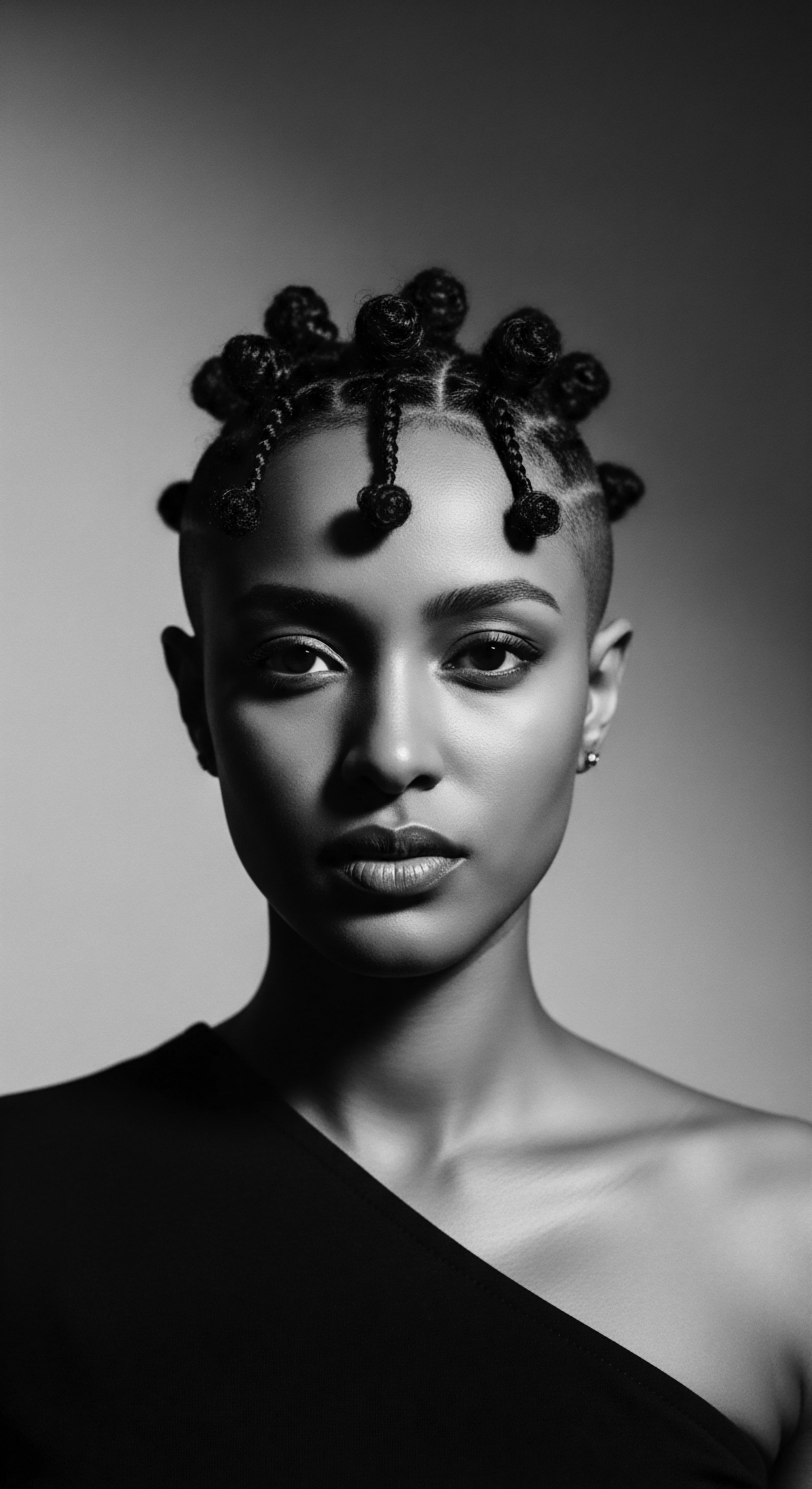
Relay
The living archive of textured hair heritage transcends mere historical accounts; it manifests in the continued relevance and scientific validation of ancestral practices. The ingenuity of our forebears, refined over millennia, provides a profound blueprint for understanding how hair can resist the sun’s intense effects. This legacy is not static; it is a dynamic conversation between ancient wisdom and contemporary understanding, revealing the deep, interconnected strategies for resilience.
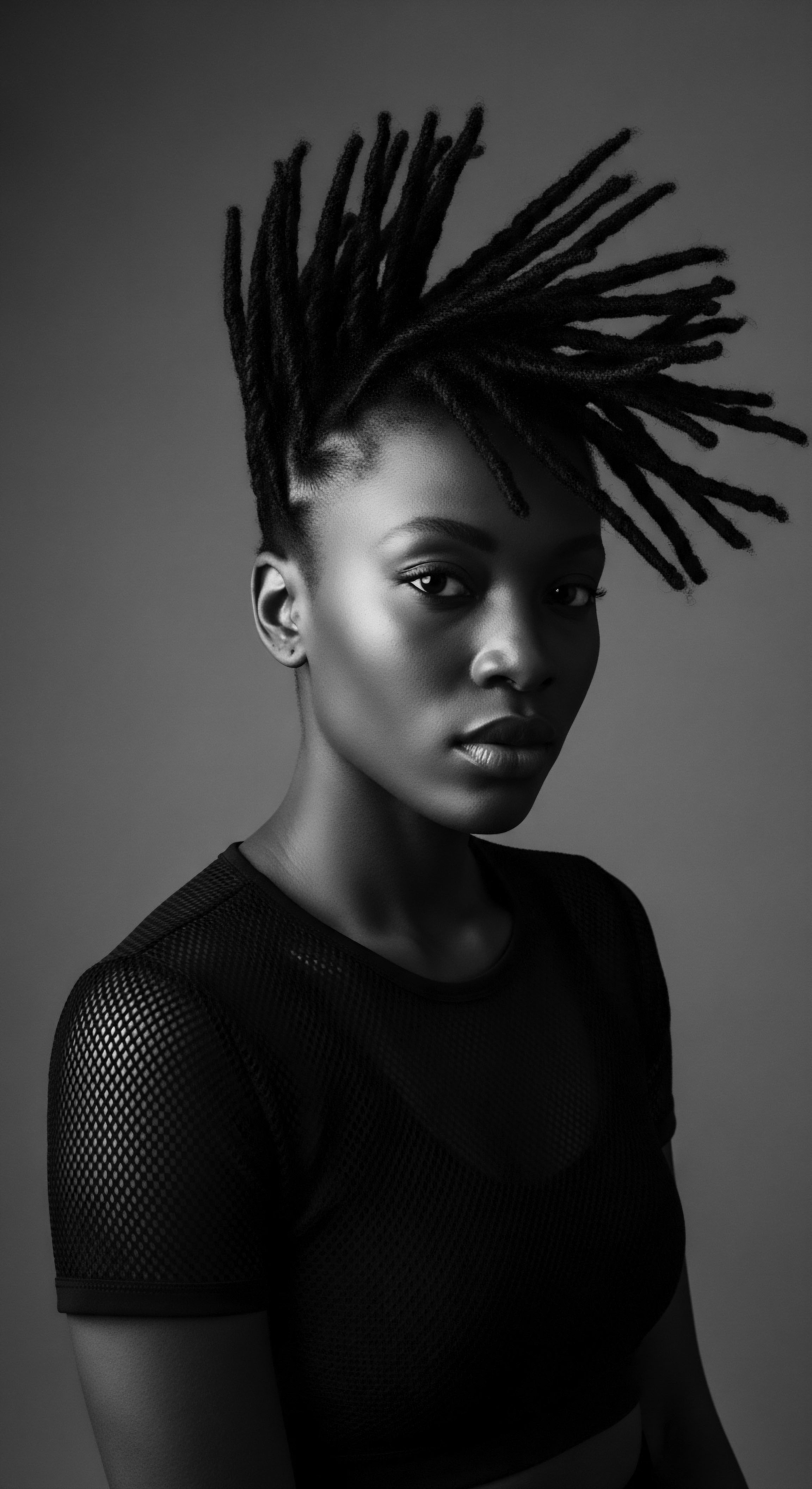
How Did Hair’s Structure Aid Sun Resilience?
The very morphology of textured hair offers a foundational layer of protection against the sun. Its tightly coiled, spiral shape creates a denser appearance compared to straighter hair types. (Caffrey, 2023). This dense coil pattern, combined with the wider follicular arrangement, allows for greater air circulation to the scalp, acting as a natural insulator and cooling mechanism in hot, sunny climates.
(Caffrey, 2023), (Noma Sana, 2024). This inherent structural characteristic means less direct sunlight penetrates to the scalp, thereby lessening the overall UV burden on the hair and skin.
Furthermore, the spiraled nature of textured hair can cause light to scatter rather than penetrate directly, offering a dispersion effect that reduces concentrated UV exposure on any single point of the hair shaft. While modern research highlights the sensitivity of textured hair to UV-induced changes at the keratin level, the physical attributes offered a natural defense. (ResearchGate, 2024). This interplay between physical structure and the environment underscores a remarkable evolutionary adaptation.

Beyond Coverings ❉ The Role of Traditional Styling
Ancestral hairstyling was often a sophisticated form of protective design, minimizing direct sun exposure while also conveying cultural narratives. These styles were not solely about beauty; they held functional significance for hair health.
Consider the practice of Braiding, a communal activity deeply embedded in African cultures. (Hair Care Practices from the Diaspora, 2025). Styles like cornrows, Fulani braids, and Bantu knots have origins deeply embedded in African history. (Hair Care Practices from the Diaspora, 2025).
These intricate styles often tuck the hair inward, keeping it safely gathered and away from direct solar radiation. The hair, once braided, presents less surface area for UV absorption compared to loose, flowing hair. This reduction in exposure helps to mitigate protein degradation and lipid oxidation caused by sunlight. (UV Damage of the Hair, 2023).
Ancestral hairstyles, beyond their aesthetic and social meaning, were carefully considered forms of sun protection, minimizing direct exposure and maintaining hair integrity.
One compelling example of this protective styling is the historical use of cornrows by enslaved Africans. Beyond their aesthetic value, cornrows served as a covert means of communication, with specific numbers or patterns of braids relaying coded messages about escape routes or meeting times. (FroHub, 2022). This act of resistance also had the unintended but vital benefit of keeping hair protected from harsh environmental conditions, including sun exposure during labor.
(FroHub, 2022). The practice of braiding, therefore, became a complex act of survival—physical, cultural, and even political—all while providing natural protection.

The Earth’s Own Sunscreen ❉ Clays and Minerals
Beyond oils and deliberate styling, certain ancestral communities utilized natural clays and minerals directly on their hair and skin for sun protection. These practices speak to an intimate knowledge of geological resources and their properties.
The Himba women of Namibia, for instance, are renowned for their use of Otjize, a paste created by mixing butterfat with red ochre clay. This mixture is applied to their skin and hair daily, serving as a body art and a physical barrier against the harsh Namibian sun. (Seriously FAB, 2023). Research on similar clays, such as bentonite, suggests that certain mineral compositions in clay can effectively absorb UV light, offering a natural form of sun protection.
(PubMed Central, 2020). Some studies have found that certain white clays displayed an estimated SPF of 3.6, highlighting the tangible protective benefits of these ancestral applications. (Daily Maverick, 2021).
This tradition extends to other African communities, such as the Xhosa people in the Eastern Cape, who use red and white clay variants for decoration and sun protection, often mixed with glycerine and water. (Daily Maverick, 2021). The use of such substances points to an observational science long before modern chemistry, a heritage of empirical wisdom that understood the earth’s natural defenses.

Comparing Ancestral and Modern Approaches to Sun Resilience
The thread connecting ancestral foresight with contemporary understanding becomes evident when we compare methods for sun resilience.
| Ancestral Method (Heritage) Natural Oils and Butters (e.g. Shea, Coconut) |
| Modern Correlate/Understanding Modern leave-in conditioners and hair serums with UV filters. Many plant-based oils contain natural antioxidants and fatty acids that help create a protective barrier. (ResearchGate, 2024). Contemporary products often feature plant-based collagen or rosemary leaf extract, which help shield against oxidative stress and photoaging. (Oribe Hair Care). |
| Ancestral Method (Heritage) Head Coverings and Protective Styles (e.g. Headwraps, Braids, Cornrows) |
| Modern Correlate/Understanding Recommended wearing of hats, scarves, or wigs to physically block UV rays. Protective styles like braids and twists are still advised for sun protection today. (GlammedNaturallyOil, 2020). |
| Ancestral Method (Heritage) Clay and Mineral Pastes (e.g. Himba Otjize) |
| Modern Correlate/Understanding Mineral sunscreens containing zinc oxide or titanium dioxide. Clays provide a physical barrier against UV radiation by scattering or absorbing radiant energy. (Sabinet African Journals, 2023), (Cambridge University Press, 2024). |
| Ancestral Method (Heritage) Hair's Natural Coiled Structure and Melanin Content |
| Modern Correlate/Understanding Scientific recognition that darker, textured hair possesses inherent UV filtering capabilities due to higher melanin content, which absorbs and filters harmful radiation. (Cosmet Dermatol, 2011). Textured hair is also recognized as being more sensitive to UVR-induced changes than straight hair, underscoring the importance of tailored care. (ResearchGate, 2024). |
| Ancestral Method (Heritage) The enduring principles of ancestral sun protection—physical shielding, natural barriers, and inherent biological defenses—continue to shape modern approaches to hair health. |
The knowledge held by ancestral communities was not rudimentary; it was precise, adaptive, and effective. The continuity of these practices, often validated by modern scientific inquiry, speaks to a deep, unbroken heritage of hair care wisdom.
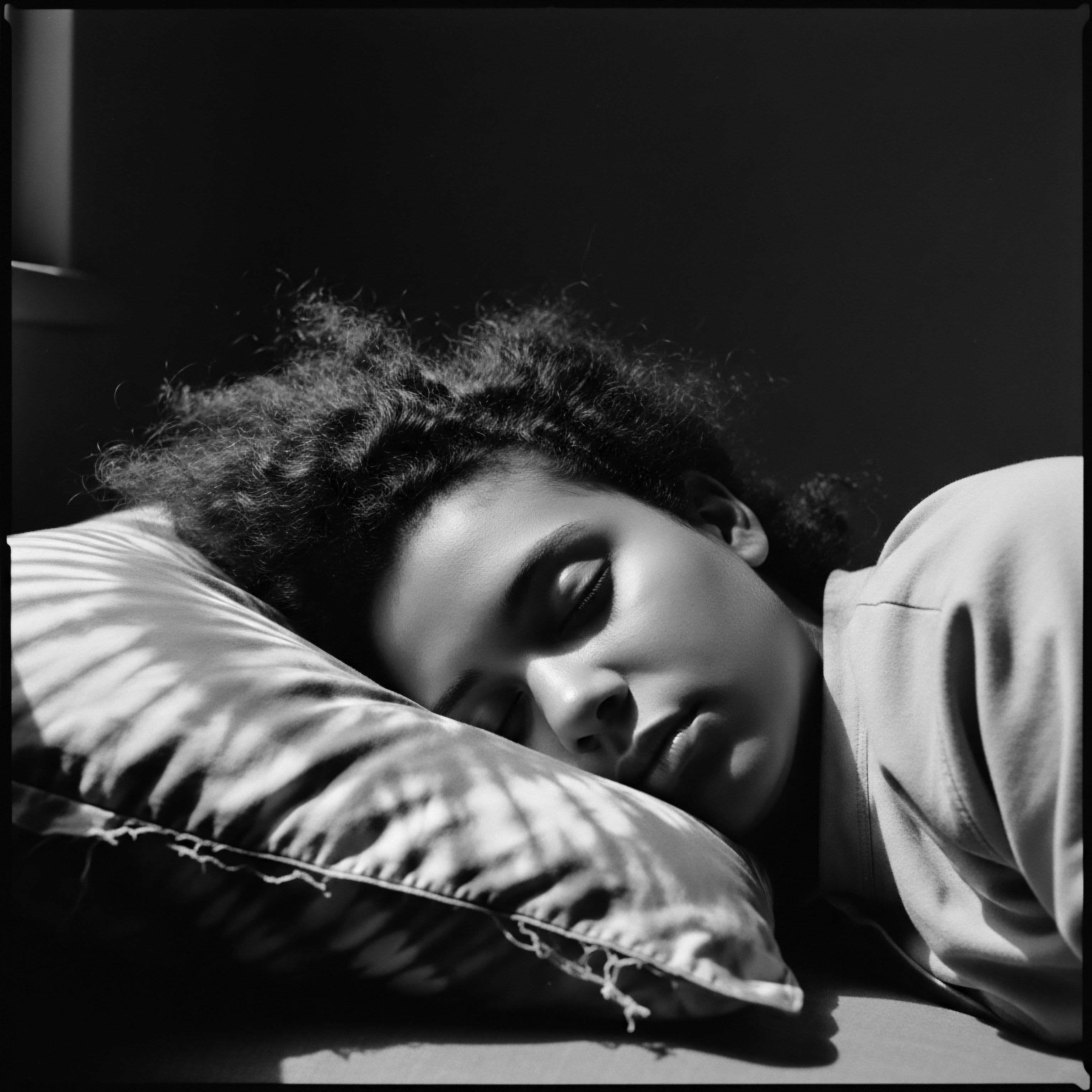
Reflection
The journey through ancestral methods for supporting textured hair resilience against the sun is more than a historical accounting; it is a meditation on the enduring spirit of human ingenuity and a profound reverence for heritage. Each coil, each strand, carries within its very structure the story of adaptation, of living in concert with the sun, of protection born from deep earth wisdom. Our exploration shows how the very biology of textured hair, paired with centuries of observation and practical application, provided sophisticated defenses long before the advent of modern laboratories.
From the practical elegance of a carefully tied headwrap—a shield against the elements and a banner of identity—to the profound understanding of plant oils and mineral clays, ancestral care was holistic. It recognized hair not as an isolated entity but as an extension of self, deeply interwoven with community, environment, and spirit. The resilience we speak of today, in salon and home, echoes the fortitude of those who walked before us, whose knowledge ensured the vibrancy of these unique crowns under even the harshest sun.
This heritage is a living, breathing archive, inviting us to look back not in nostalgia, but with a gaze that seeks understanding and inspiration. The lessons are clear ❉ listen to the wisdom of the earth, honor the practices that sustained generations, and understand that true radiance stems from a profound connection to our past. The textured hair on our heads today is a testament to survival, an ongoing narrative of beauty and strength, reflecting the very soul of a strand.

References
- Caffrey, C. (2023). Afro-textured hair. EBSCO Research Starters.
- Cosmet Dermatol. (2011). Hair Weathering, Part 1 ❉ Hair Structure and Pathogenesis.
- Daily Maverick. (2021, January 15). On the therapeutic use of clay.
- Dr Emmaline Ashley, Cosmetic Physician. (2023, February 17). A Brief History of Sunscreen.
- FroHub. (2022, September 15). Black History Month UK ❉ Celebrating Black Hair & Culture.
- GlammedNaturallyOil. (2020, December 10). You Need to Protect your Natural Hair from the Sun!
- Grand Textures by Janay. (2024, April 22). Exploring the Origins of Sun Protection and Beauty Rituals in Ancient African, Mexican, and Polynesian Traditions.
- Hair Care Practices from the Diaspora ❉ A Look at Africa, America, and Europe. (2025, January 23).
- Helix Hair Labs. (2023, March 3). THE HISTORY OF THE HAIR BONNET.
- ICT News. (2023). 5 Reasons Natives Have Lustrous Locks ❉ Ancient, Indigenous Hair Remedies.
- Noma Sana. (2024, October 30). The History of Straightening Afro and Textured Hair.
- Oribe Hair Care. Invisible Defense Universal Protection Spray.
- PubMed Central. (2020). Bentonite Clay as a Natural Remedy ❉ A Brief Review.
- ResearchGate. (2024). Exploring the Use of Natural Ingredients for Textured Hair UV Protection.
- Sabinet African Journals. (2023). Indigenous knowledge applied to the use of clays for cosmetic purposes in Africa ❉ an overview.
- Seriously FAB. (2023, June 19). The Compelling History of Global Sun Protection.
- Sofnfree Naturals. (2022, July 8). How To Protect Your Afro Hair From Sun Damage.
- The Zoe Report. (2024, February 26). The Silk Bonnet’s History Is Rooted In Black Beauty Rituals.
- UMTHI. (2023, September 14). The Cultural Significance and Representation of Afro-Textured Hair.
- UV Damage of the Hair. (2023).
- 22 Ayur. (2023). The Ancient Natural Ways of Hair Care Across Continents.
- Africa Facts Corner. (2024, December 2). The History and Culture of African Natural Hair.
- Byrdie. (2022, September 27). The Significance and History of Bonnets.
- Cambridge University Press. (2024, January 1). Clays in Cosmetics and Personal-Care Products.
- Carrier Oils Benefits and Uses For Natural and Organic Hair Care. (2020, September 16).
- Midwest Bioprocessing Center. (2022, July 28). A Brief History of Sunscreen.
- Afriklens. (2024, November 1). African Hairstyles ❉ Cultural Significance and Legacy.
